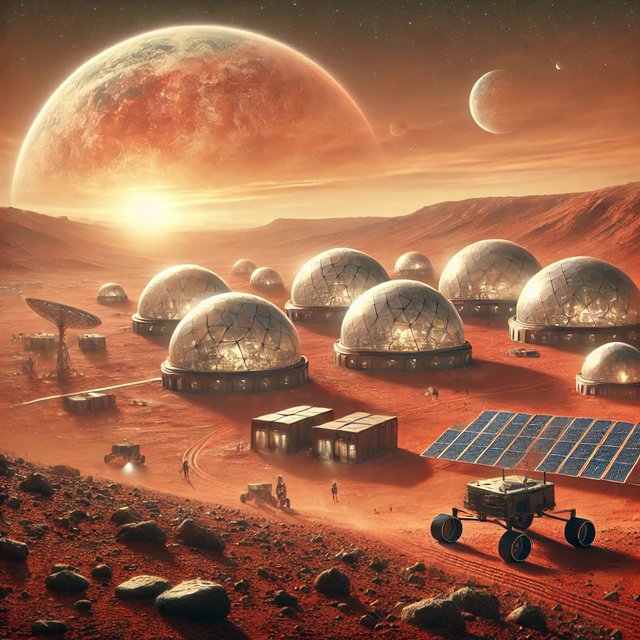
Why Mars?
Mars has always fascinated humans. Its red color, surface features, and similarities to Earth make it the best candidate for colonization. It’s close enough to reach with current technology and has resources like water ice, which could support life. Living on Mars could help humanity survive if Earth faces disasters like climate change or asteroid impacts.
Challenges of Colonizing Mars
Colonizing Mars isn’t easy. There are several challenges:
- Harsh Environment: Mars is extremely cold, with an average temperature of -60°C (-80°F). It also has no breathable air.
- Radiation: Without a magnetic field or thick atmosphere, Mars exposes settlers to harmful cosmic radiation.
- Distance from Earth: It takes around 7-9 months to travel to Mars, making supply missions difficult.
- Survival Needs: Settlers will need food, water, and shelter to survive. Growing food on Mars or transporting it from Earth will be a huge challenge.
How Can We Overcome These Challenges?
Scientists and engineers are working on solutions:
- Habitat Design: Building strong, insulated habitats to protect settlers from cold and radiation.
- Resource Utilization: Extracting water from underground ice and creating oxygen from Mars’ atmosphere.
- Energy Sources: Using solar panels or nuclear energy to power colonies.
- Food Production: Developing systems for growing food in greenhouses or using hydroponics.
Who is Leading the Effort?
Several organizations and countries are working on Mars colonization:
- NASA: Planning human missions to Mars in the 2030s, with its Artemis program as the first step.
- SpaceX: Elon Musk’s company aims to build a self-sustaining colony on Mars, starting with the Starship rocket.
- China: Also planning robotic and crewed missions to Mars in the coming decades.
- Other Companies and Agencies: Many private companies and international organizations are collaborating to make Mars colonization a reality.
How Close Are We?
We are making progress, but colonizing Mars will take decades. Robotic missions have already explored Mars, and rovers like Perseverance are studying its surface. SpaceX plans to send humans in the 2030s, and NASA’s Artemis program is a critical step in preparing for Mars missions.
However, building a permanent colony will require solving many challenges and could take until the mid-21st century.
Benefits of Mars Colonization
Living on Mars could have many benefits:
- Backup for Humanity: Protecting humans if Earth becomes uninhabitable.
- Scientific Discovery: Learning more about the history of our solar system and the possibility of life on Mars.
- New Technology: Innovations developed for Mars could improve life on Earth.
Quick Facts About Mars Colonization
- Mars’ day, or "sol," is 24 hours and 37 minutes—similar to Earth’s.
- Its gravity is about 38% of Earth’s, meaning you’d weigh much less.
- Mars has seasons, polar ice caps, and giant dust storms.
Conclusion
Mars colonization is an exciting and ambitious goal that could change humanity’s future. While it’s still decades away, each step brings us closer to becoming a multi-planet species. The journey to Mars isn’t just about survival—it’s about exploration, discovery, and pushing the boundaries of what’s possible.